Oil
-
Short-term volatility on the oil market is fuelled by two factors - potential Russian invasion on Ukraine and potential Iran nuclear deal
-
The first factor has been putting upward pressure on oil prices in recent months while the second factor could resolve a lot of current supply issues
-
It is said that Iran could immediately bring 0.8-1.0 mbpd of exports back in case agreement is reached
-
In case Russia decides to invade Ukraine, as much as 5 million barrels of daily exports could be at risk. However, settlements with Asian countries are less vulnerable than dealings with European countries, that import around 3mbpd of Russian oil
-
In case uncertainty in the markets persists, oil prices could jump above $100 per barrell. JP Morgan expects barrel price to reach $120 in case of a military conflict. Citi expects prices to rally 10% immediately after conflict starts
-
US oil stockpiles and strategic reserves sit at the lowest levels since 2008, while stockpile of oil-derived products is lowest since 2015
-
A pick-up in US oil stockpiles last week resulted from shutting down refineries due to low temperatures
-
Implied US demand for oil-derived products exceeded 22 mbpd for the first time in history
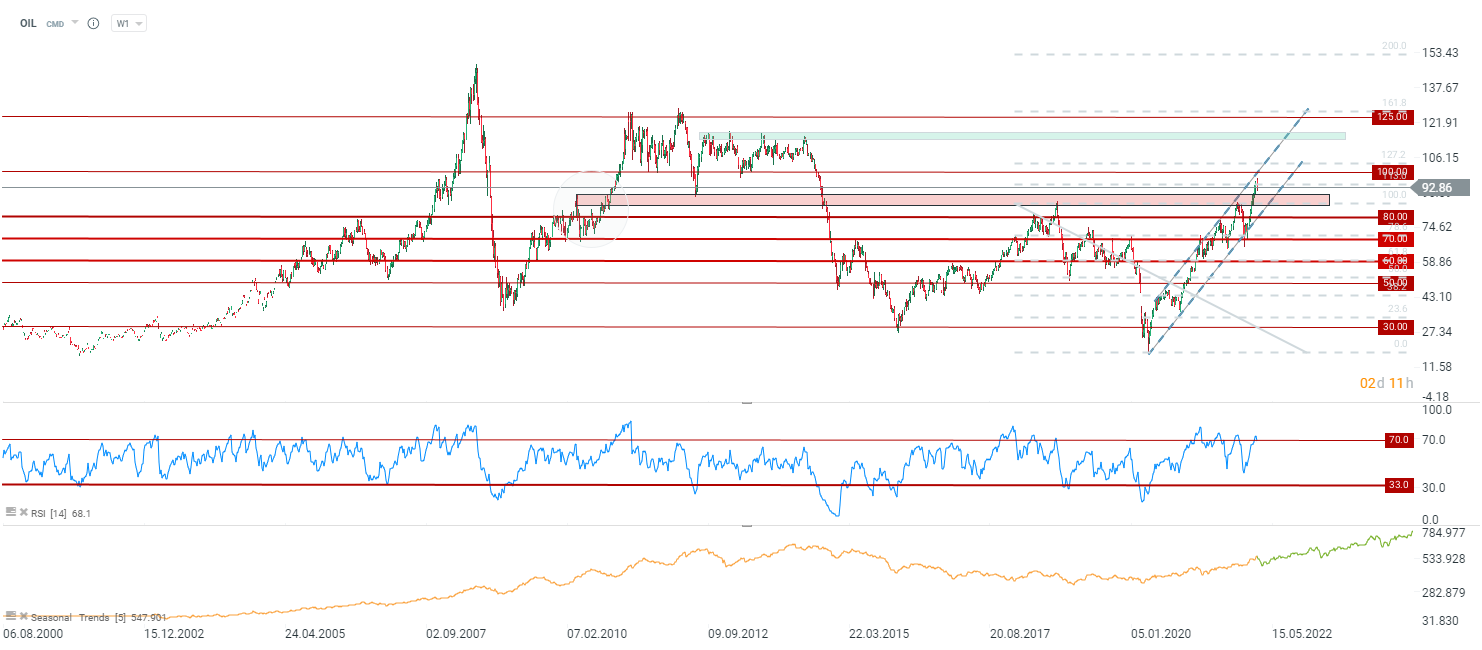 Brent (OIL) halts advance at the resistance zone marked with 113% exterior retracement of the latest big downward impulse (2018-2020). Key support can be found in the $85-87 area while key resistance can be found in the $100 area. Source: xStation5
Brent (OIL) halts advance at the resistance zone marked with 113% exterior retracement of the latest big downward impulse (2018-2020). Key support can be found in the $85-87 area while key resistance can be found in the $100 area. Source: xStation5
Start investing today or test a free demo
Create account Try a demo Download mobile app Download mobile appGold
-
Gold price remains at elevated levels amid Russia-Ukraine tensions
-
It should be noted that Russia is world's biggest holder of gold reserves and those could be used for settlements in case financial sanctions are levied
-
FOMC minutes were not as hawkish to further boost odds for more decisive tightening. Market odds of a 50bp rate hike in March dropped below 50%
-
Moreover, just part of FOMC members opted for an early QE-end. Balance sheet reduction will not be as aggressive as previously believed
-
From a technical point of view, gold is trading in a long-term triangle pattern. Key resistance can be found at the 61.8% retracement of the most recent big downward impulse
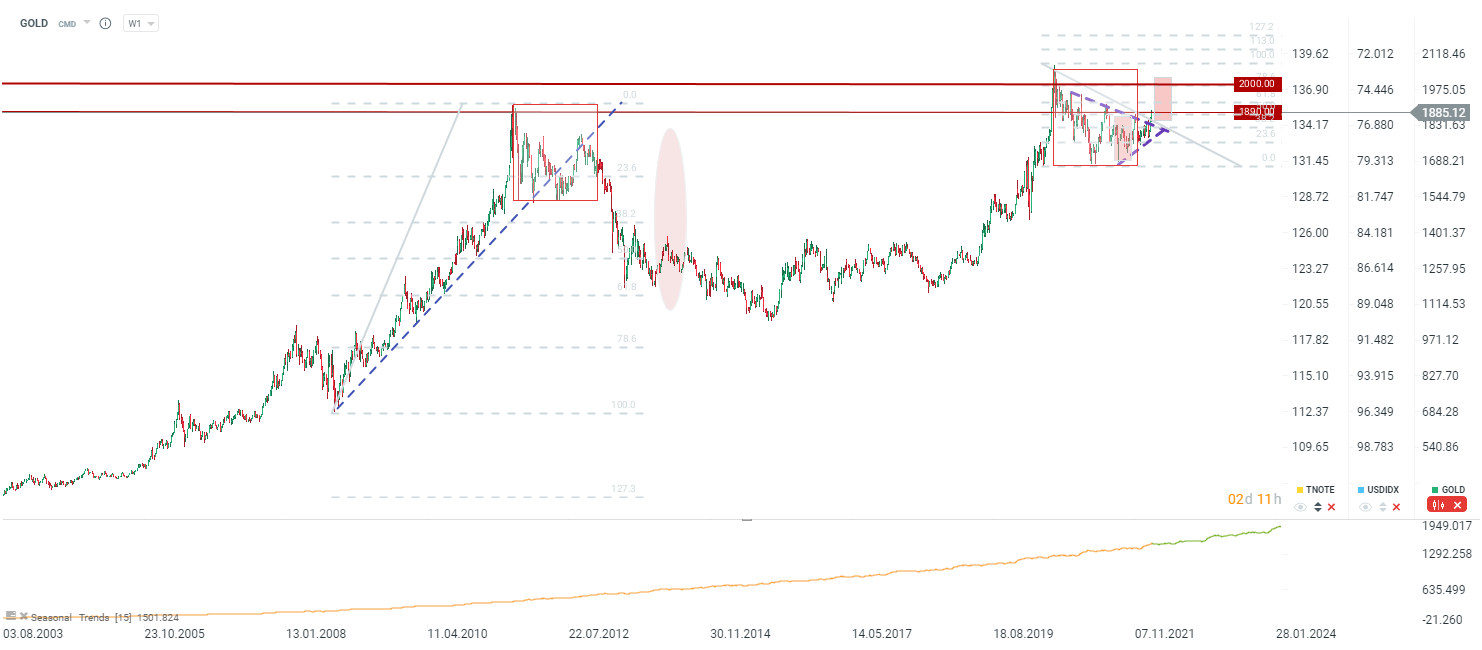 Gold price broke above the key downward trendline that acted as an upper limit of a triangle pattern. Source: xStation5
Gold price broke above the key downward trendline that acted as an upper limit of a triangle pattern. Source: xStation5
Coffee
-
Coffee stockpiles dropped by over 500 thousand bags since the end of 2021 - a reduction of around a third
-
It is expected that coffee stockpiles will continue to drop amid low production in key growing area
-
Coffee farmers have been receiving prices below production costs in recent years and especially at the beginning of Covid-19 pandemic. It has encouraged some of them to switch to other crops
-
Outlook for higher coffee prices should persist in at least the next two seasons, given lack of ability to boost supply and recovering demand
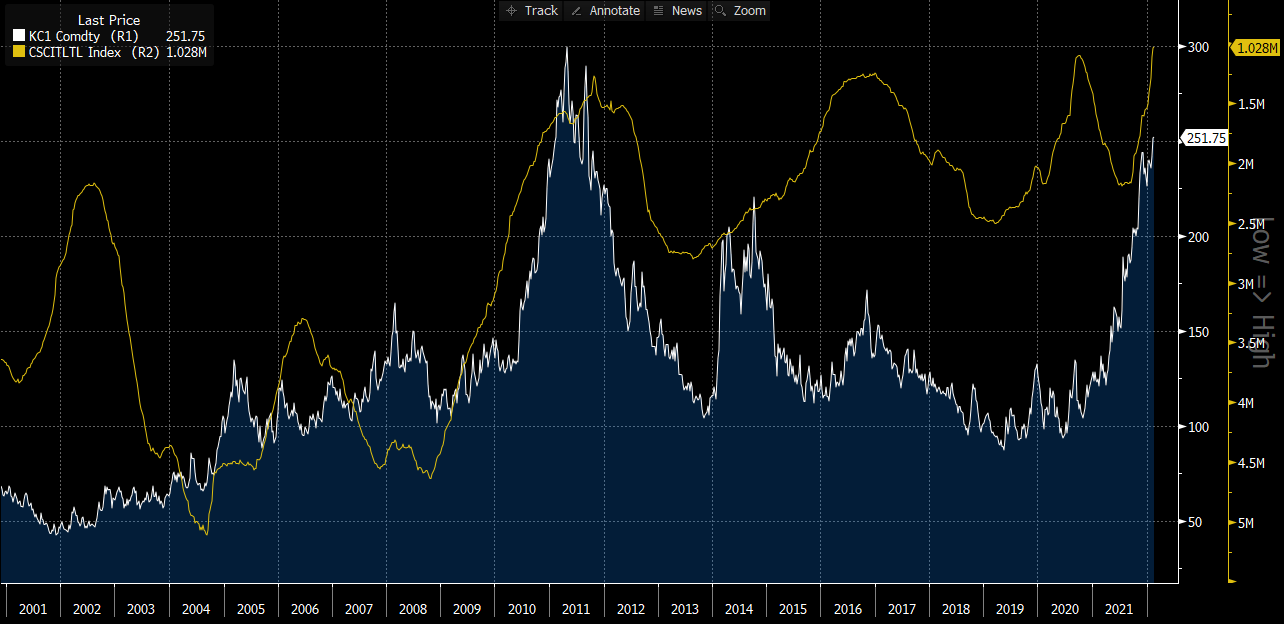 Coffee stockpiles continue to drop. A drop of inventories below 1 million bags could be an important event for global coffee markets. It should be noted that 1 million bags of coffee accounts for less than 1% global coffee consumption. Source: Bloomberg
Coffee stockpiles continue to drop. A drop of inventories below 1 million bags could be an important event for global coffee markets. It should be noted that 1 million bags of coffee accounts for less than 1% global coffee consumption. Source: Bloomberg
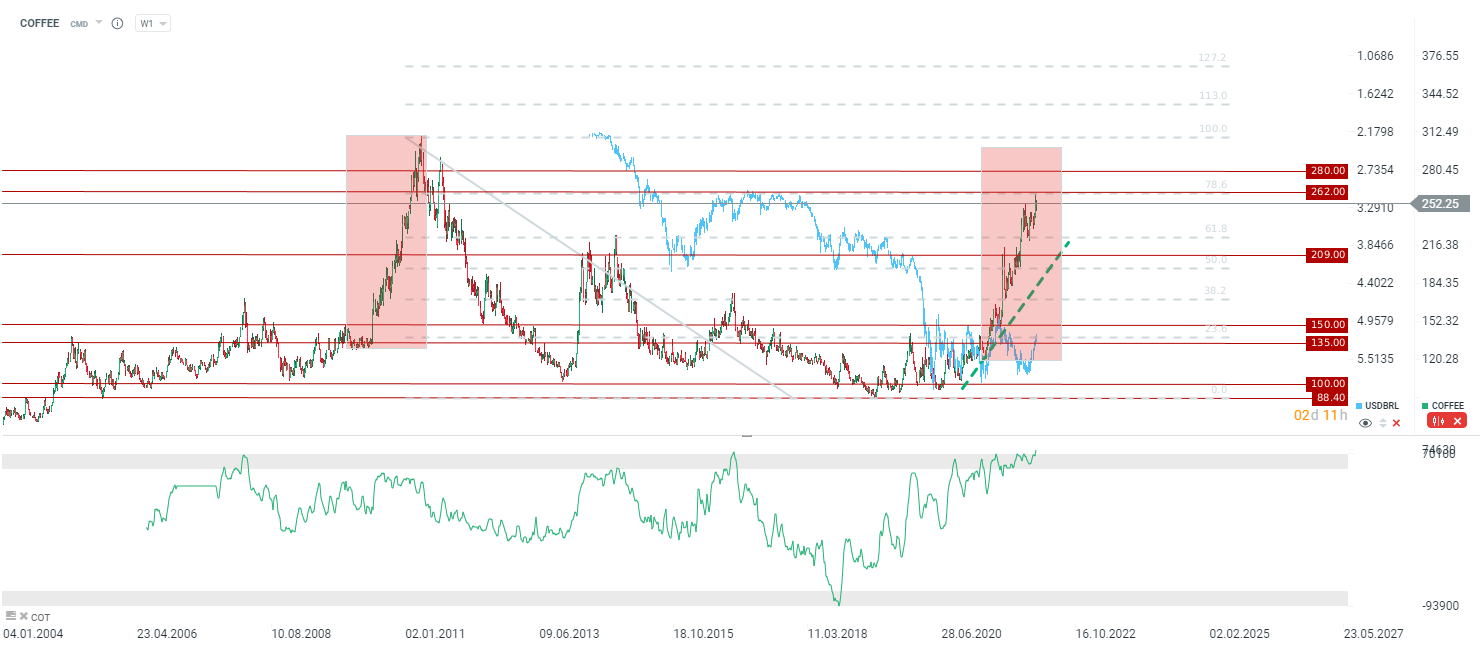 Taking into account the 2010-2011 rally and a very similar situation now, the target of the ongoing rally could be in the 300 cents per pound area. Source: xStation5
Taking into account the 2010-2011 rally and a very similar situation now, the target of the ongoing rally could be in the 300 cents per pound area. Source: xStation5
Sugar
-
Sugar is not benefiting as much as other soft commodities, like coffee or cocoa
-
It can be reasoned with fact that sugar is closely tied to biofuel demand, especially in Brazil
-
Nasdaq reports that ethanol demand in Brazil was 32% YoY lower in January 2022
-
Price hikes by Brazilian Petrobras could be a key aspect for sugar. In case hike is big, biofuel demand may recover, what should also support sugar
-
Low demand for biofuel causes sugar factories to favour sugar production rather than selling sugarcane to ethanol producers
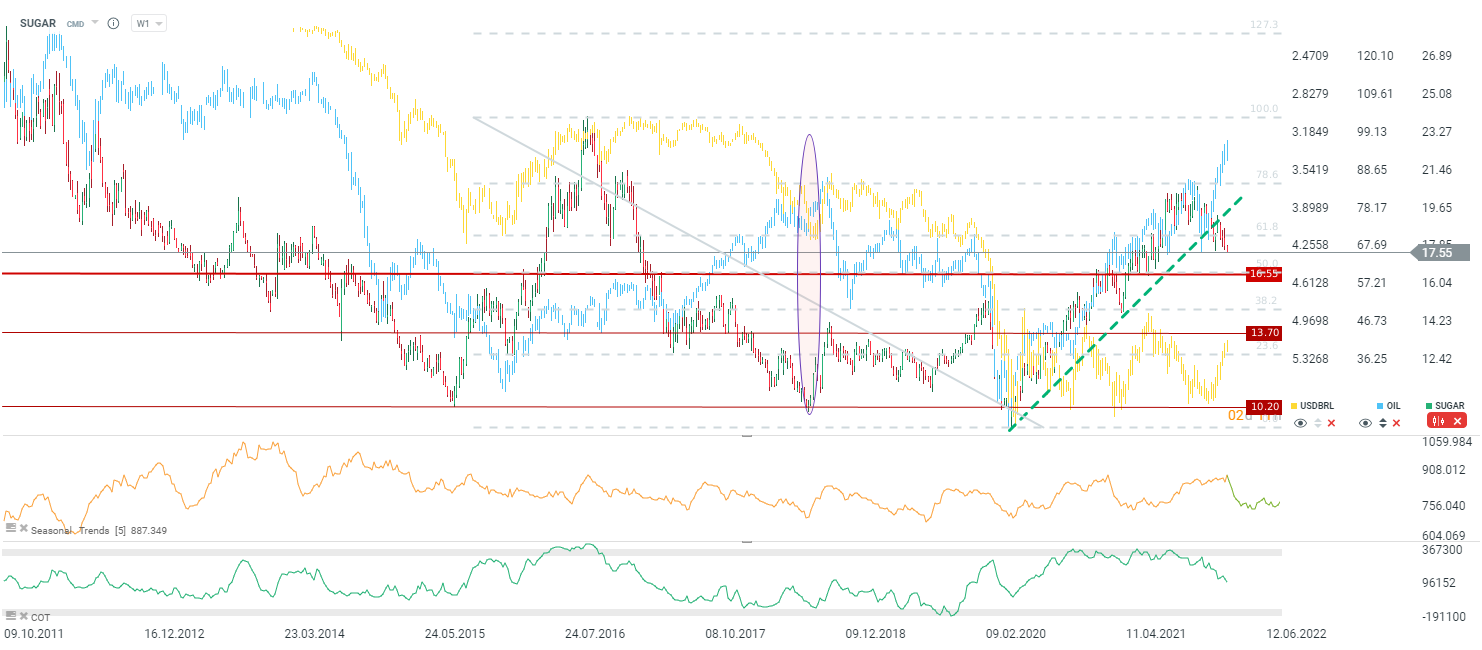 A significant divergence between sugar price and oil price can be observed. In case fuel prices in BRazil are hiked, investors may look towards the sugar market. Moreover, strengthening of BRL may limit exports. Current, low speculative positioning could be treated as a contrarian signal. Source: xStation5
A significant divergence between sugar price and oil price can be observed. In case fuel prices in BRazil are hiked, investors may look towards the sugar market. Moreover, strengthening of BRL may limit exports. Current, low speculative positioning could be treated as a contrarian signal. Source: xStation5

